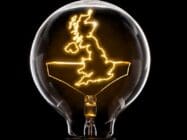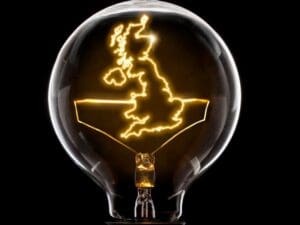
There is universal agreement that the world needs to rapidly transition to renewable power.
However, writes Alan Greenshields, director of ESS Inc, as this transition accelerates it is broadly recognized that challenges associated with connecting wind, solar and battery technologies to the grid present significant impediments to achieving global climate and clean energy goals.
Understanding and overcoming these impediments will be critical if net zero targets are to be achieved.
The energy epiphany
The war in Ukraine destabilised global energy markets and led to significant cost increases across Europe and worldwide, shocking the Western world into the realisation that the slow transition from fossil to renewable energy needs to accelerate significantly.
The epiphany has come with an understanding that this will require substantial investments in infrastructure as we transition the grid from big, centralised fossil power plants to distributed renewable infrastructure.
To deliver the transition, the US has passed the $370 billion Inflation Reduction Act, the EU is set to match the US with its Green Deal, and the UK has deployed a new Security Energy Strategy with promises to go further.
Beyond funding, a number of regulatory hurdles remain to realizing the potential benefits of these ambitious programs.
The UK strategy was announced in April 2022 and promised to slash through red tape so that solar, wind and battery infrastructure can be deployed and renewable goals met. One year later, reports by the Financial Times and others are documenting the ongoing challenges posed by interconnect issues, posing a significant barrier.
These issues have led to a queue for renewable deployments that can involve a 15 year wait in the UK to connect new renewable power projects to the grid. These delays pose severe headwinds to Britain’s ambitious decarbonization targets.
The challenge primarily lies in an outdated grid and an outdated bureaucracy. The UK’s National Grid, with its architecture designed for a small number of large fossil fuel generators, has historically had 40-50 applications for connections a year.
With the increase in new renewable projects, this has risen to about 400 a year, representing ~234GW of renewable energy waiting to be connected to the grid.
Grid infrastructure has not kept pace with the rapid growth in renewable projects. One way to accelerate renewable deployment while enabling grid upgrades will be to prioritize new projects that include long-duration energy storage (LDES) technologies. These projects can ease transmission congestion by storing excess energy during periods of over-generation and deploying it when needed.
Have you read?
Xcel Energy to deploy private LTE network to support grid modernisation
Why long duration storage could be the solution to the energy crisis
Overcoming the connection queue
Addressing a multifaceted problem will require multifaceted solutions.
First, clearly the bureaucracy that manages grid interconnections to evaluate and approve new applications needs reform to keep pace with the volume of requests.
A predominantly renewable grid will look different than the fossil-based system upon which we have relied to date, and our regulators must enable, not hinder, that transition.
In the short term, one potential reform that could accelerate approvals would be to prioritize project viability instead of simply “first come, first served” when evaluating proposed projects. This can lead to nonviable projects wasting limited public resources despite the fact that they are unlikely to ever be built at the expense of viable projects that could move forward quickly.
For example, the initial application doesn’t require a letter of authority for a parcel of land. Projects without a clear claim to a specific physical location can hold up projects on which construction could begin immediately.
Delays are worsened by other administrative issues, such as demands for cumbersome environmental assessments for each project, and the increasing cost of booking grid capacity in advance. In fact, a grid connection tied to a piece of land could be worth more than £1 million ($1.3 million).
The National Grid has addressed this issue in a recently published report saying it is carrying out “a major programme of reform to redesign the existing connection process”, which includes ensuring inactive projects are not blocking the pipeline.
Hopefully, this makes a positive impact, but we still need to go a step further to address the backlog. A good starting point would be to update the regulatory regime and remove planning blockers as well as changing to a first ready, first serviced basis and making sure that companies that put in applications have viable projects.
Allowing greater flow of electricity
Transmission system upgrades are also needed to expand the capacity of existing high-voltage transmission lines to allow greater flows of renewable electricity, carry electricity long distances and better connect regions and communities. This will ensure people can access power when they need it, providing affordable and abundant clean energy.
In the long term, upgrades are likely to require more cables, poles, wires, and transformers to transport electricity, skilled workers, investment, and specific materials, all of which will be in high demand as many countries are facing the same challenges at the same time.
Grid reform
The UK can’t continue to react to one electricity/energy crisis at a time until the growing complexity of the grid and its reliance on fossil fuels brings it to breaking point.
Instead, the government must proactively put measures in place to ensure the grid can harness and accelerate the amount of renewable energy needed to meet climate targets.
Fortunately, grid issues can be mitigated in the short term by deploying new energy storage technologies to support the accelerated deployment of renewables.
Battery storage enables energy from renewables to be stored and then discharged when customers need power most, even if the wind is not blowing and the sun isn’t shining. By integrating storage both into the grid and giving priority to those new renewable projects with storage components, it will be possible to improve the flexibility of the grid while also reducing emissions.
By re-examining not only the procedures for project approval, but the components that make up the grid, it will still be possible for the UK to meet our ambitious climate and energy goals, accelerate renewable deployment and avoid further reliance upon natural gas. We just need to get the rules right and allow ourselves to fully take advantage of new innovations that are commercially available today.








